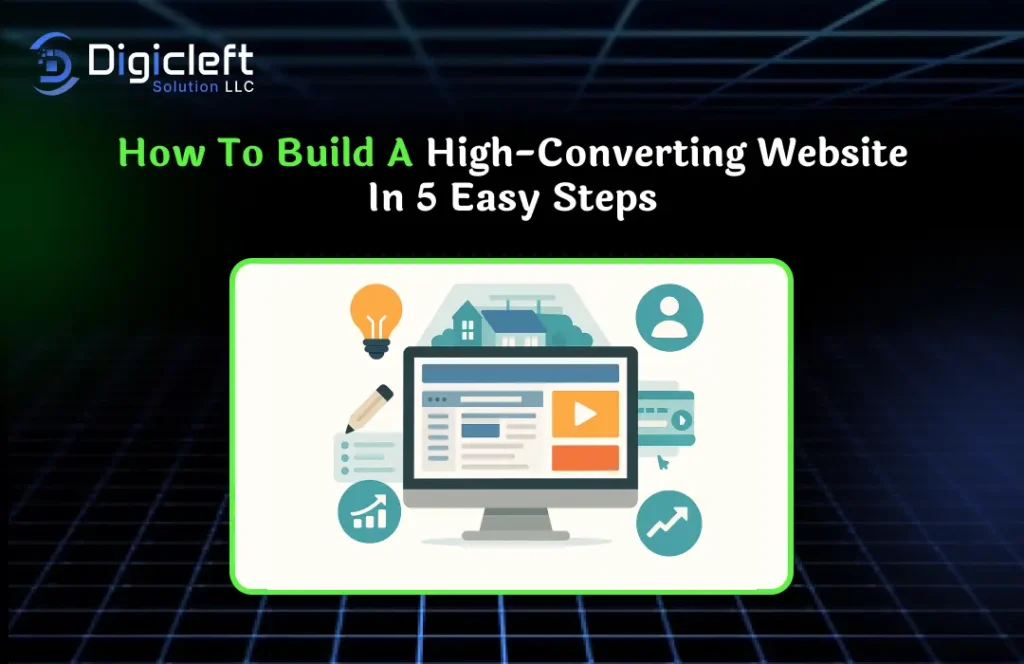
Too many businesses treat their websites as a “suitable folder” rather than a sales machine. A high-converting website doesn’t just look nice; it works hard, day and night, to turn curious visitors into paying clients. The secret lies in structure and psychology. Today, we’re breaking it down into 5 easy steps you can apply right away to transform your site into a conversion powerhouse.
Step 1: Understand Your Audience
- Define your ideal client: Who are they? What problems keep them up at night?
- Use analytics & surveys: Tools like Google Analytics, Hotjar, and surveys help you gather insights.
- Create personas: Build character sketches with name, age, and interests for clarity.
When you know your audience, you can speak their language and deliver what they truly need.
Step 2: Craft a Strong Value Proposition
People don’t buy products they buy better versions of themselves. Your value proposition should be crystal clear:
- What you offer
- Why it matters
- How it makes life better
Example: Instead of “Innovative solutions for modern needs,” say: “Save 10 hours a week with our all-in-one project management app.”
Step 3: Design with Conversions in Mind
- Keep it clean & simple: White space is your friend.
- Think mobile-first: Over 60% of traffic comes from mobile.
- Strategic CTAs: Every page should guide toward an action.
- Page speed matters: Use GTMetrix or GooglePageSpeed to optimize.
Think of your website like a store layout if users can’t find checkout, they’ll leave frustrated.
Step 4: Build Trust and Credibility
- Testimonials & reviews: Social proof builds trust.
- Case studies: Show before-and-after results.
- Certifications & guarantees: Security badges, money-back guarantees, awards.
- Consistent branding: Logos, typography, and colors that look professional.
Trust isn’t built overnight, but it’s the foundation of conversions.
Step 5: Test, Analyze, and Optimize
- A/B Testing: Experiment with headlines, images, and CTAs.
- Heatmaps & recordings: Tools like Hotjar show user behavior.
- Track conversions: Use Google Analytics for data-driven insights.
- Iterate: Small tweaks over time lead to big results.
Optimization is an ongoing process, not a one-time project.

Extra Tips for Boosting Conversions
- Email capture strategies: Offer lead magnets like free guides or discounts.
- Personalization: Show content or offers based on visitor data.
- SEO best practices: More traffic means more opportunities to convert.
Case Study: Digicleft Solution
Digicleft Solution transformed their website into a conversion machine by:
- Focusing on clear messaging and CTAs
- Adding testimonials and case studies for credibility
- Using A/B testing to refine what works
The result? A website that not only looks good but drives measurable business growth.
Conclusion
Building a high-converting website isn’t rocket science it’s about strategy, clarity, and continuous improvement.
Recap of the 5 steps:
- Understand your audience
- Craft a strong value proposition
- Design with conversions in mind
- Build trust and credibility
- Test, analyze, and optimize
Follow these steps, and you’ll turn your website into a lead-generating, money-making machine.
FAQs
1. What is the most important element of a high-converting website?
Clarity. Visitors should know exactly what you offer and how it helps them within seconds.
2. How long does it take to see conversion improvements?
It varies, but most businesses see results within 2–3 months of focused optimization.
3. Can small businesses build high-converting websites affordably?
Yes! With smart strategy and tools like WordPress, Webflow, or Shopify, even small budgets can achieve big results.
4. What tools are best for tracking website conversions?
Google Analytics, Hotjar, Crazy Egg, and Optimizely are popular options.
5. How often should I update or test my website?
At least quarterly. But if you’re running active campaigns, monthly testing is ideal.


